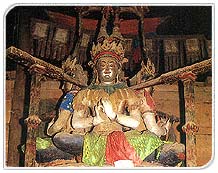Himachal Pradesh Travel Guide
---------------------------------------------------------------------------------------------------------------------------------------------------------------------------------------------------------------------------------
Himachal Pradesh Home » About Himachal Pradesh » Places to See » Buddhist Pilgrimage Tours » Fairs & Festivals
Adventure Tourism » Air Line Ticketing » Car Coach Rentals In Himachal Pradesh
Hotels in Himachal Pradesh » Map »Travellers Tools
---------------------------------------------------------------------------------------------------------------------------------------------------------------------------------------------------------------------------------
Himachal Pradesh Home » About Himachal Pradesh » Places to See » Buddhist Pilgrimage Tours » Fairs & Festivals
Adventure Tourism » Air Line Ticketing » Car Coach Rentals In Himachal Pradesh
Hotels in Himachal Pradesh » Map »Travellers Tools
---------------------------------------------------------------------------------------------------------------------------------------------------------------------------------------------------------------------------------
Buddhist Pilgrimage Tours
Spiti

Ki Monastery, Spiti:
A great impetus came when king Trison Detsen (Khri-Sron-Ide-bTsan, 755-797 AD) of Tibet embraced the teachings of the Buddha. He sent to India for great masters like Santarakshta and the famous teacher and 'tantric', Padmasambhava. Under Pdmasambhava's influence, Mahayana Buddhism, the 'Greater Vehicle' fanned over the world's highest plateaux. Known to the Tibetans as Guru or Orgian Rimpche, the Precious Master, Padasambhava began the synthesis of Mahayana practices, 'yogic tantricism' , and the native Bon religion-retaining a large measure of its nature worship and demonolatry. The combine of ritual, fiath and philosophic content created what we recognize today as Vajrayana Bhddhism, the "thunderbolt Vehicle".
The ninth century brough a break in the spread of Buddhist learning when the king, Lang Darma rejected it and began supporting the Bon faith. He was murdered by a Buddhist monk, Pal Dorje and the tenth and eleventh centuries witnessed the grand revival of Buddhist learning. It was an age of great teacdhers-Atisha Marpa, Rinchensang-po and Milarepa.
In 1357 AD, the towering reformer, Tsong, khapa began the religious renewal that emphasized Atisha's teachings and a purity of doctrine. He founded the Geluk-pa sect. the 'Yellow Hats' who grew to hold considerable sway-and from which the Dalai lamas were to come. (In 1578 AD, a descendent of Chengis-Ghengis-Khan and ruler of China, had given Sonam Gyatso the title of Ta-le, now written as Dalai- Which means the 'Master of the Ocean of Wisdom' When the kingdom of Guge rose in western Tibet after the assassination of Lang Daram, it encompassed the present day tracts of Spiti, Lahaul, Zanskar and upper kinnaru. The strong cultural and religious identity of the region dates back to those years.
Kinnaur to Spiti:
Further, on the road from Sarahan to Spiti,is the turning point for Kalpa and Recong Po. With the Kinner Kailash in direct view, a 79-foot-high rock formation alongside changes colour as the day progresses. On the route to Spiti are Jangi, Chango and Nako. At Nako the houses seem half buried in the ground and the nearby lakes' waters seep into the rooms.
Spiti to Kaza:
Tabo's 8th century gompa has exquisite frescoes and stucco statues and is known as the "Ajanta of the Himalayas" Kaza, apart from home to many monasteries, is an ideal base for treks to Ki and Kibber, the region's highest permanently inhabited village linked by a motorable road.
Himachal Pradesh Home
» About Himachal Pradesh
» Places
to See » Buddhist
Pilgrimage Tours » Fairs
& Festivals
Adventure Tourism » Air Line Ticketing » Car Coach Rentals In Himachal Pradesh
Hotels in Himachal Pradesh » Map »Travellers Tools
Adventure Tourism » Air Line Ticketing » Car Coach Rentals In Himachal Pradesh
Hotels in Himachal Pradesh » Map »Travellers Tools